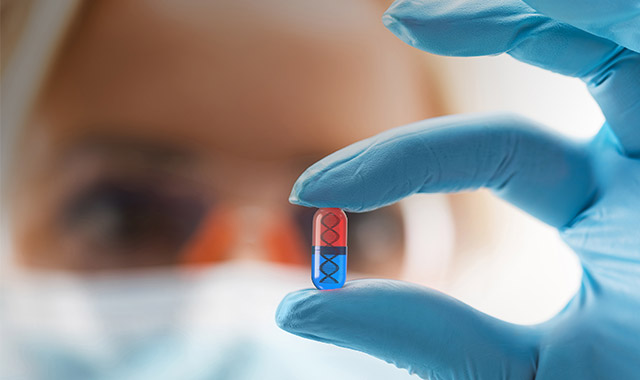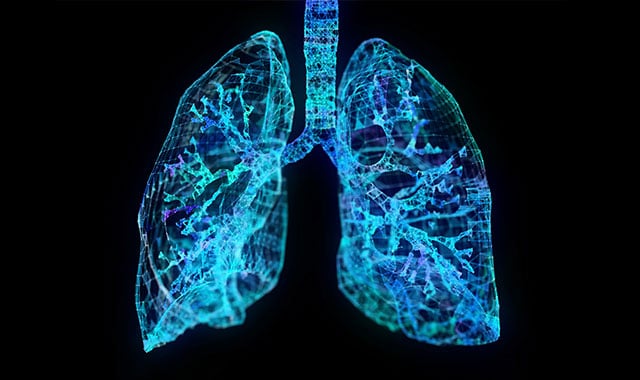High-Throughput Platform Propels Gene Editing Therapy Research

Gene editing therapies are transforming the way complex genetic disorders are treated. The fast-growing field involves correcting or replacing defective genes to treat disease.
Despite the promise, one significant hurdle remains: delivery. Currently, delivery of therapeutic genetic payloads to desired cells or tissues is achieved by encapsulating the payloads in viral vectors. However, these viral delivery systems have some significant drawbacks that prevent their widespread use including a limited payload capacity, immunogenicity in patients, and manufacturing complexity.
Payload Capacity
Limited cargo capacity of traditional virus vectors restricts the delivery of larger or multiple genes, thereby restricting the number of diseases that can be treated. Many of the newer generations of gene editing molecules (like base and prime editors) are also too large to be delivered by standard virus vectors.
Immunogenicity
Viral vectors trigger the human immune system, activating it to attack foreign invaders. This means that patients can only receive a single dose of viral therapy because a second dose would likely be rendered ineffective by the pre-existing immunity. Thus, alternative delivery methods are direly needed, particularly for patients requiring multiple-dose regimens.
Production Challenges
Therapeutics that rely on adeno-associated virus vectors can be difficult and expensive to manufacture due to the high costs of the downstream separations processes required when the viruses are produced in cell culture. The purity and yield of the viral product is low, which limits their availability and cost effectiveness.
Targeting Delivery
It can be challenging to ensure accurate delivery to intended cells, reducing the efficacy of therapies. While viral vectors have evolved throughout human history to interact with different cell types, significant work is still needed to enhance the ability of non-viral delivery vehicles to accurately target and deliver payloads to specific cells of interest.
The Potential of PNPs
Polymeric Nanoparticles (PNPs) are a promising candidate for the delivery of gene therapies. The tiny particles, which can be made using a wide range of monomers with the intent of producing biocompatible polymers, can provide a host of benefits. Unlike viruses, which required ages of natural selection, polymer chemistry offer us an opportunity to engineer and design the vehicle to meet target requirements.
The precision associated with specific tuning of a PNP design allows PNPs to bypass healthy cells, reducing the risk of side effects. PNPs are capable of penetrating biological barriers. They can be designed to carry large payloads, respond to specific stimuli, or be tuned for controlled release for even more personalized treatment. Yet, when compared to other delivery methods, PNPs can also be effectively and affordably manufactured for mass administration, often at a fraction of the price of viral vectors due to the lack of cell-based processes in PNP production.
Delivering better drugs to patients, faster
Battelle is developing a platform called HIT SCANTM (High Throughput Synthesis Characterization and Assessment of Nanoparticles) which enables researchers to synthesize, evaluate, and test large quantities of PNPs in a systematic and efficient manner. Robust, yet versatile, the HIT SCANTM platform uses a combination of high-throughput synthesis, high-throughput biological characterization, and advanced machine learning capabilities to yield paradigm shifting results that aid in the prediction of new delivery vehicle candidates. This enables the development of engineered delivery vehicles that will not require ages of evolution, but instead an ever-accelerating pace of sharpened design and discovery.
Science in Action
Non-viral delivery vehicles were at the center of recent partnerships connecting Battelle with the University of California, Davis, and the Pennington Biomedical Research Center at University of Alabama, Birmingham.
These collaborative teams of engineers, materials scientists, biologists, and data scientists combined their formulation and drug delivery expertise to take the initial steps towards developing a treatment for Neurofibromatosis (NF1).
A genetic condition characterized by tumor growth along the nerves, (NF1) is especially hard to treat. A newly developed human NF1 plasmid was previously developed, but it lacked a suitable delivery vehicle to carry the large payload. Additionally, there were no existing strategies to safely target delivery to Schwann cells (SC), which are a critical cell type associated with NF1.
The large cargo capacity, structural diversity, functionalized targeting, and ease of preparation of PNPs made them a prime candidate.
Additional research has focused on discovering and developing novel payloads capable of repressing key steps in the regulatory pathway involved in NF1. This work has identified some potentially promising leads, though additional work is needed to confirm the efficacy of this approach in vivo.
Further research will continue on all aspects of the payloads and delivery vehicles necessary to advance this work to the clinic. The HIT SCANTM platform has been able to successfully obtain size, loading efficiency, transfection efficiency, and cytotoxicity data for multiple payloads and connect this data to critical aspects of delivery vehicle design and production. This data will be used by the machine learning platform to enable improved delivery vehicle design and performance in the future. Future delivery vehicles will also undergo ultra-high throughput (uHT) in vivo biodistribution screening using Battelle's proprietary barcoding technology to further inform future delivery vehicle designs.
Related Blogs
BATTELLE UPDATES
Receive updates from Battelle for an all-access pass to the incredible work of Battelle researchers.



